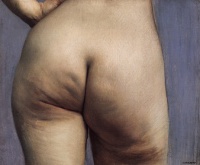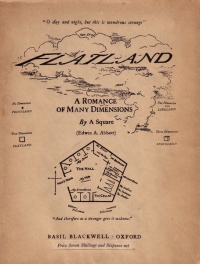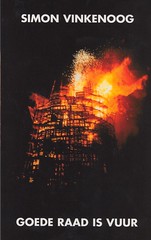
Study of Buttocks (c. 1884) by Félix Vallotton

Portrait of Madame X (1884) by John Singer Sargent

Flatland: A Romance of Many Dimensions is an 1884 novella by Edwin Abbott Abbott

Les champignons considérés (1884) – Lucien-Marie Gautier


Study of Buttocks (c. 1884) by Félix Vallotton

Portrait of Madame X (1884) by John Singer Sargent

Flatland: A Romance of Many Dimensions is an 1884 novella by Edwin Abbott Abbott

Les champignons considérés (1884) – Lucien-Marie Gautier
The ocular eroticism mentioned in my previous post appears to be a niche art criticism trope.
Evidence:
Reconfiguring the Renaissance: Essays in Critical Materialism – Page 159
by Jonathan V. Crewe – Renaissance – 171 pages
37 The same model of what we may call “ocular eroticism” informs secular literature as well: one thinks of Wyatt’s “Through mine eye the stroke from her did …
Eroticism on the Renaissance Stage: Transcendence, Desire, and the Limits of … – Page 103
by Celia R. Daileader – Performing Arts – 1998 – 194 pages
… displacing the “ocular eroticism” prevalent from Plato through Wyatt – an eroticism which pertained to the longing for one’s lady as well as the longing …
Reading the Medieval in Early Modern England – Page 208
by Gordon McMullan, David Matthews – Drama – 2007 – 287 pages
… point is that Mary’s ‘erotic fragrance’ — a vestigial remnant of medieval ‘ocular eroticism‘ — presupposes the importance of Mary’s physical knowledge …
Shakespeare the Actor and the Purposes of Playing – Page 134
by Meredith Anne Skura – Performing Arts – 1993 – 325 pages
… particularly of the erotics of the gaze.50 The ocular eroticism associated with the hunt in general in Love’s Labour’s Lost is here epitomized in …
The Madness and Perversion of Yukio Mishima – Page 70
by Jerry S. Piven – Literary Criticism – 2004 – 273 pages
… which is also consistent with Mishima’s ocular eroticism as simultaneously retaining, destroying, and merging with those on whom he gazes, …
Sexual Aliveness: A Reichian Gestalt Perspective
by Edward W. L. Smith – Self-Help – 1987 – 126 pages
Gotta love Google books.
Goddamned Days on a Goddamned Planet standing on Emotional Rescue
Dimitri Verhulst is Flanders’ hottest (I hate that word) novelist and one of the few contemporary Flemish novelists translated into English (Problemski Hotel is in print by Marion Boyars)
His latest novel Godverdomse dagen op een godverdomse bol (Eng: Goddamned Days on a Goddamned Planet) was not released through conventional channels but given away free with Humo magazine which understandibly upset the bookselling business. The book’s release did not go unnoticed, far from it, I believe one out of every 20 Flemish people now have a copy in their homes. Imagine that on the scale of a large country. Incredible.
The book.
Goddamned Days on a Goddamned Planet offers a bleak view of humanity.
The story is that of human evolution, much like the epic poem The Legend of the Centuries by Victor Hugo was in the 19th century and The Cantos by Ezra Pound in the 20th century.
The novel should be seen as an epic poem rather than regular novel. It’s difficult to imagine that as novels go, this one is plotless, unless you concede that reality lacks plot for want of a plotter.
Most people seem to find the novel boring and hard to read, others have remarked to laugh out loud while reading.
Dimitri Verhulst will be best-known internationally for the future film version of his novel De Helaasheid der Dingen (expected in 2009).
Verhulst is a writer pur sang. He never repeats a formula. I agree that this novel is cold, but its reputation will go a long way. Still, I will be wanting some emotional relief from his future writing.
Digression #1: Steve + Sky (the link is Felix van Groeningen) is WCC #68.
Note to self: should be able to get hold of Verhulst’s poetry.

Goede Raad is Vuur (cover photograph: ‘De Toren van Babel‘ in Ruigoord by Marrit Dijkstra)
Goede Raad is Vuur is a Dutch language poetry anthology and at the same time a theory of poetry, first published by Simon Vinkenoog in 2004.
Simon Vinkenoog is the Dutch Timothy Leary, just as Jean-Jacques Lebel was the French Timothy Leary, see counterparts.
The book is the definitive guide to cult poetry and begs for a English translation.
In this collection for example: “The Right Mask” by Brian Patten in a Dutch translation more powerful than its English original:
One night a poem came up to a poet.
From now on, it said, you must wear a mask.
What kind of mask? asked the poet.
A rose mask, said the poem.
I’ve used it already, said the poet,
I’ve exhausted it.
Then wear the mask that’s made out of
a nightingale’s song, use that mask.
Oh, it’s an old mask, said the poet,
it’s all used up.
Nonsense, said the poem, it’s the perfect mask,
still, try on the god mask,
now that mask illuminates heaven.
It’s a tight mask, said the poet,
and the stars crawl about in it like ants.
Then try on the troubador’s mask, or the singer’s mask,
try on all the popular masks.
I have, said the poet, but they fit so easily.
Simon
Vinkenoog
Simon Vinkenoog at Demian yesterday where he read from Goede Raad is Vuur to me (and the rest of Demian).
“The Right Mask” by Brian Patten was translated by C. Buddingh’ is included in Goede Raad is Vuur, a poetry book by Simon Vinkenoog.
“The Right Mask” is the ultimate mask allegory and a piece of cult poetry.
I know own a signed and author-illuminated copy of Goede Raad is Vuur.
Goede Raad is Vuur is the first book on poetry I own.
The window display
Simon
Perhaps the ultimate and most underrated dream vision (underrated because it is not recognized as a dream vision) in the history of Western literature is the The Temptation of St. Anthony, here [1] painted by Domenico Morelli as Le Tentazioni di Sant’Antonio, also the title of an Italian film of 1911 which depicts Flaubert’s version.
[1] painted by Domenico Morelli as Le Tentazioni di Sant’Antonio,
Saint Anthony has not been popular among writers nor filmmakers but has been very influential to painters, the dream visions lend themselves perfectly to exploring taboo subject matter.
Only two notable filmmakers had a go at the story, Georges Méliès in 1898 and the aforementioned Italian version of 1911.
Then there is the curious case of The Private Affairs of Bel Ami[3]. For the realisation of this film Loew-Lewin Productions announced a “Temptation of St. Anthony” contest. David Loew and Albert Lewin had persuaded twelve modern artists to paint Anthony’s vision. Each artist was commissioned for $500. Max Ernst was the $3,000 prizewinner.
The work was to be shown in a close-up at a key moment in the film.
Although Max Ernst‘s rendition (here[5] in a better scan) was the winning work, Salvador Dalí‘s contribution[6] (featuring a parade of spider-legged elephants tormenting the saint) went on the become better-known.
[Youtube=http://www.youtube.com/watch?v=D2eVb4CC4XU]
Dream sequence in La Prisonnière (1968) by Henri-Georges Clouzot
I love dream sequences in film. Every Disney film has nearly one. Always psychedelic. Film as a medium is particularly well-suited to impart dream visions, much better than previous visionary literature, which required more narrative realism.
An interesting juxtaposition here is Dante‘s Divine Comedy compared to its first film adaptation[1].
[Youtube=http://www.youtube.com/watch?v=RA3NRe5kgak]
The Divine Comedy exemplifies the conventions of dream-vision literature, though Dante specifically says that his Comedy is not a dream vision.
I guess what this post comes down to is the boring but somehow unavoidably attractive “literature vs. cinema” debate I’ve been engaging in.
The debate is boring when you limit it to either/or, but of interest if you view it from its technical angle, with fiction at the center, and medium-specificity at its perifery.
Notions such as unfilmability provide the best entry point.
But that notion I was not thinking about when going to bed last night. I thought about cinematic effects in literature, a notion first put forward to my knowledge by Lotte H. Eisner in The Haunted Screen.
She writes:
Example of a superimposition in The Last Laugh (1924) – Murnau
She concludes:
La Prisonnière is World Cinema Classic #67, L’Inferno #68.

Of course there is such a thing as female perversion and female crime, but it is rare. Two easy entry-points into this realm are the Papin sisters and closer to the Anglophone world, the Parker-Hulme friends. These cases provide access to the world of the female murderer and the black widow, the relationship between gender and crime and the concept of the folie à deux.
One of the most astonishing facts about the Papin sisters is the defense of their actions by the French intellectuals of their time.
The story:
The Papin sisters brutally murdered their employer and her daughter in Le Mans, France, on February 2, 1933.
The interpretation:
This incident had a significant influence on French intellectuals Genet, Sartre and Lacan, who sought to understand it and it was thought of as symbolic of class struggle.
“I’ve seen the photos of these two pretty girls, these servants who killed and battered their mistresses. I’ve seen the photos before and after. ‘Before’, their faces hovered like two docile flowers above their lace collars. They radiated clean living and appetizing honesty. A discreet curling iron had crimped their hair in a similar manner. And, even more reassuring than their waved hair, their collars and their air of being on a visit to the photographer, was their resemblance as sisters, the self-righteous resemblance that immediately brought blood ties and the natural roots of the family group to the fore. ‘After’, their faces glowed like a blaze. They had the bare necks of the future beheaded. Wrinkles everywhere, horrible wrinkles of fear and hatred, folds, holes in the flesh as if a clawed beast had roamed round and round on their faces. And those eyes, those same big, dark and bottomless eyes… And yet, they no longer looked alike. Each, in her own way, bore the memory of their common crime…” –“Le Mur” by Sartre
Motives of Paranoiac Crime: The Crime of the Papin Sisters, a paper by Jacques Lacan brought me to French intellectuals on the Papin sisters. Also to Nosubject.com[1], the Lacan wiki.
“Christine and Léa were genuine Siamese souls. Between them, the two sisters couldn’t even find the distance needed to wound each other…
“Christine must have gone through such torture before the desperate experience of crime tore her from her other self and allowed her, after the first hallucinatory fit in which she thought she saw her sister dead, to cry the words of blatant passion: ‘Yes, say yes!’” –Taken from “Motives of Paranoiac Crime: The Crime of the Papin Sisters“–Jacques Lacan
To conclude, from the diary of Pauline Parker:
“The day of the happy event” “I felt very excited last night and sort of night-before-Christmas but I did not have pleasant dreams…I feel very keyed up as though I were planning a surprise party. The happy event is to take place tomorrow afternoon. So the next time I write in this diary Mother will be dead.” –from Pauline Parker’s diary.
Danielle Darrieux is Mme de Rênal
I’m slowly and carefully moving towards the middle of The Red and the Black and am stricken by quotes on “female perversions” (there is no such thing, or is there?) and instances of “happiness in crime”:
“Their joy was thenceforward of a far higher nature, the flame that devoured them was more intense. They underwent transports of utter madness. Their happiness would have seemed great in the eyes of other people. But they never recaptured the delicious serenity, the unclouded happiness, the spontaneous joy of the first days of their love, when Madame de Renal’s one fear was that of not being loved enough by Julien. Their happiness assumed at times the aspect of crime. ” –Chapter 19 in The Red and the Black
“The perversity of woman!” thought Julien. “What pleasure, what instinct leads them to betray us?” –Chapter 21 in The Red and the Black